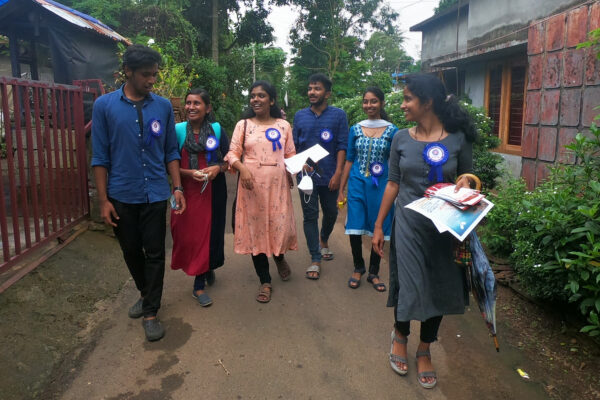We have interviewed ReAct staff across the nodes to learn more about their role at ReAct and their work towards a world free from untreatable infections.
Satya Sivaraman is the Communications Coordinator for ReAct Asia Pacific. He has been with ReAct since its inception in 2005 developing communication material, key messages and networking with civil society groups.

What have you learned from working at ReAct?
– I have learned a very wide range of things while working at ReAct, related to public health, antimicrobial resistance, the politics of global health, microbial ecology, medical anthropology, the pharmaceutical industry and the social-economic determinants of health.
– It has been a very long and rewarding journey interacting with my colleagues at ReAct and the themes the organization has been working on for the last sixteen plus years.
– And thanks to the global nature of the ReAct network I have had the opportunity to travel and understand the wide range of contexts in which the antibiotic resistance problem exists and the diverse perspectives involved in responding to it.
Is there something that you have been involved with at ReAct that you are especially proud of?
– I am very proud of the work I have done together with my colleagues in ReAct Latin America and the Reimagining Resistance group on developing a perspective that challenges the mainstream medical metaphor of war in the context of infectious diseases.
– We have together conceived an alternate paradigm of ‘Dancing with the Bacteria’ that is based on an ecological understanding of bacterial resistance and the possibility of humans and bacteria co-existing without having to kill each other for survival.
– This approach opens up many new ways of dealing with the emergence and spread of ABR that is very useful in not just communicating about the problem but also finding appropriate scientific or social solutions.

Why is community engagement important for antimicrobial resistance?
– Engaging communities is important in the context of all health interventions in general and not just antibiotic resistance.
– This is because it is a very fundamental democratic principle that needs to be practiced in the field of healthcare and public health – to consult and involve those on whose behalf policies or protocols are being made.
– In the case of antibiotic resistance the need for engaging communities is even greater than other health sectors because of the complex set of factors that drives the phenomenon of drug use and resistance.
“Without understanding the communities own priorities, needs and belief systems it is virtually impossible to make any effective intervention.”
– However, it must be pointed out that community engagement on its own will not be sufficient to make a real impact and policy change or health systems issues also need to be addressed in parallel. This is because, while communities should be at the heart of any intervention, they often lack resources to solve problems on their own and are also subject to powerful influences from outside their context.

Are there any challenges with communicating about antibiotic resistance?
– Communication in the context of antibiotic resistance – and health in general – is a complex task and does not mean only distributing information or educational material. To be able to communicate successfully it is important to learn the language of the target audience.
– However the term ‘language’ does not refer to mastering languages like English, Spanish or Chinese. Instead the language involved here is based on a deep understanding of the history, traditions, social practices and context of the audience.
– It is very important to know the audience well, listen to their views carefully and also involve them in developing communication products. It is in the process of such development that genuine understanding of concepts can be achieved. There are no shortcuts to this process.

“In many cases communication happens through actual action, without the use of words or images. As it is said ‘action speaks louder than words’. So, in many contexts, ‘doing’ can become a powerful message on its own.”
– As we can see, communication work on ABR involves a mix of many different methods of getting the message across to create maximum impact. Further, to be a good communicator requires one to first change one’s own behavior before advocating behavior change to others.
– Therefore the real challenge is to keep one’s approach open, understand the context, and not get stuck with a very narrow definition of communication
About ReAct Asia Pacific’s Antibiotic Smart Communities:
- The Antibiotic Smart Communities project, initiated by ReAct Asia Pacific, addresses the challenge of implementing Global Action Plan and National Action Plans on Antimicrobial Resistance.
- The project seeks to create a template for community involvement, exploring best practices and enhancing local ownership of AMR interventions.
- The Antibiotic Smart Communities project creates a template for community engagement on the issue and explores the best practices to increase the local ownership of interventions on antimicrobial resistance.
- Additionally, the Antibiotic Smart Communities project designed a holistic indicator framework to measure the level of preparedness of local communities to address the global health issue of drug-resistant bacteria.
More from "How we work and are organized"
- We share knowledge
- We encourage action
- We influence policy
- Satya Sivaraman staff interview
- Silvina Alessio staff interview
- Mengying Ren staff interview
